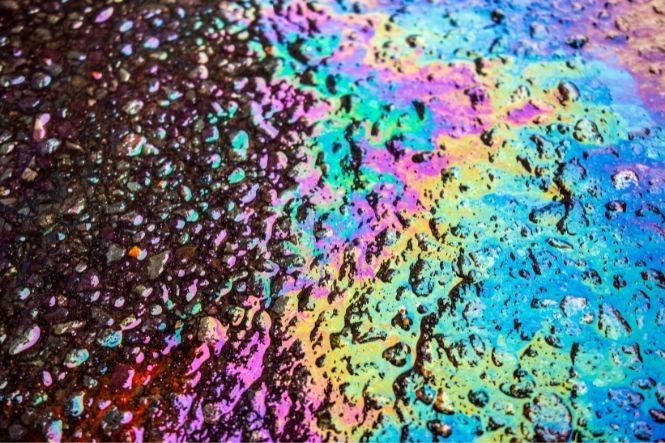People who regularly tinker with cars, motorcycles or other mechanical devices at home will be familiar with the problems caused by spilt petrol. On concrete drives it’s just a case of mopping it up (see Removing Stains From Concrete Drives), which is why you’ll see concrete rather than tarmac used for petrol station forecourts.
But petrol spilled on tarmac is another matter. Because the sticky black ‘glue’ of the tarmac mix is bitumen, an oil by-product, spilt petrol will start to dissolve it and the driveway surface will break down. That goes for any other oil by-products too, such as diesel, paraffin or other light oils.
Quick Mop up if Possible
If you’re there when the spill happens, the best thing to do is mop up as much you can with an absorbent rag. Get on to this as quickly as possible. You could then try a warm water and detergent mix with a brush but don’t push too hard at the aggregate on the tarmac as it’s likely to loosen. The idea is to get the detergent mix in so that it breaks down the petrol, then rinse it off with plenty of water.
Driveway Patching is the Only Other Option
However, if you don’t get a chance to do this, if the spillage is from drips from under a car and they haven’t been noticed, then the only remedy is to cut out the top surface and Patch It. This is unfortunate because tarmac cannot be repaired invisibly so the patch will always be obvious.
But if this isn’t done the petrol will continue to eat its way down into the tarmac. The aggregate will be loosened, and each time a car wheel goes over the area, more aggregate will be spilled out. The end result will be an unsightly hole, so it’s better to get in and effect the repair before it gets to that state.
How to Patch it
A good method to use is to get a power saw to cut down into the driveway surface to a depth of around 5cm. Mark out an area surrounding the contaminated area and at least 10cm more around each side, to make sure you get all the damaged material below the surface as well as on top. This could be done with a hammer and bolster.
Once this section is emptied of all loose material, cover the edges of the pit with tarmac jointing compound, sometimes called cold pour. This will stop water getting into the edges of the hole while the repair is setting, which would weaken the adhesion of the patch.
Filling the Hole With Tarmac Repair
The hole can then be filled with a commercial tarmac repair product from a builders’ merchant. This is essentially tarmac that has been mixed together and treated with retardants to stop it from setting before being bagged up. Apply this in two or three layers, compacting each layer – we used a lump hammer and a bit of scrap metal plate.
When the repair has been built up to the correct level, paint more cold pour around the join. Unfortunately this makes the patch more obvious but if it isn’t done water could get in and, through repeated freezing and thawing, break the seal between the patch and the rest of the driveway.

